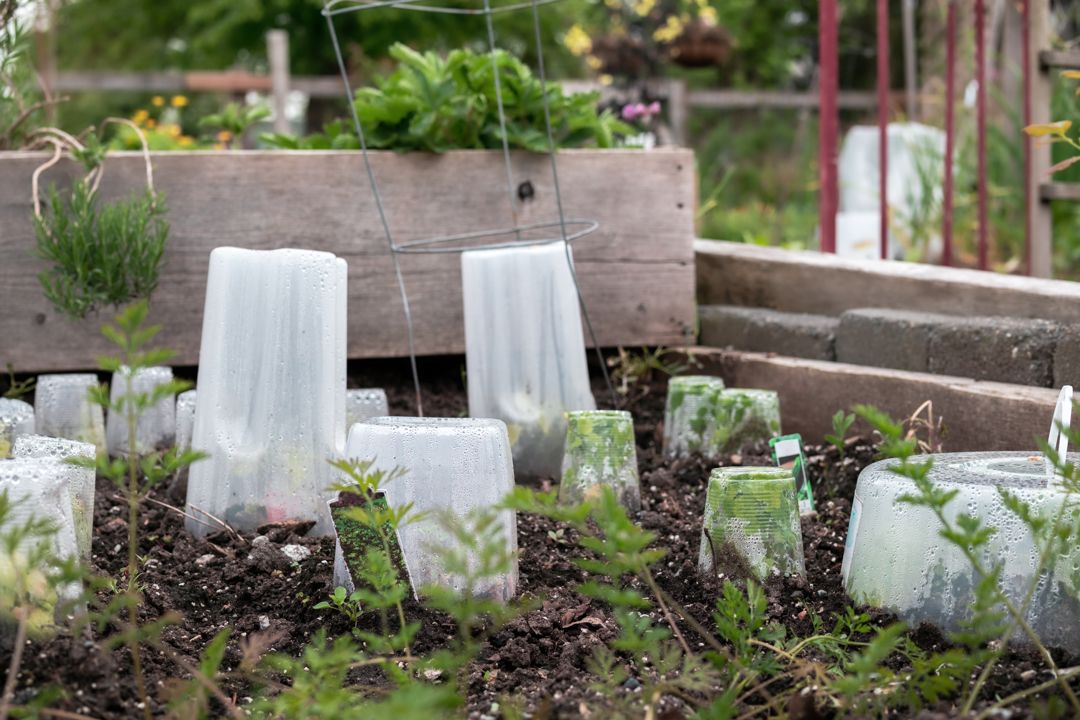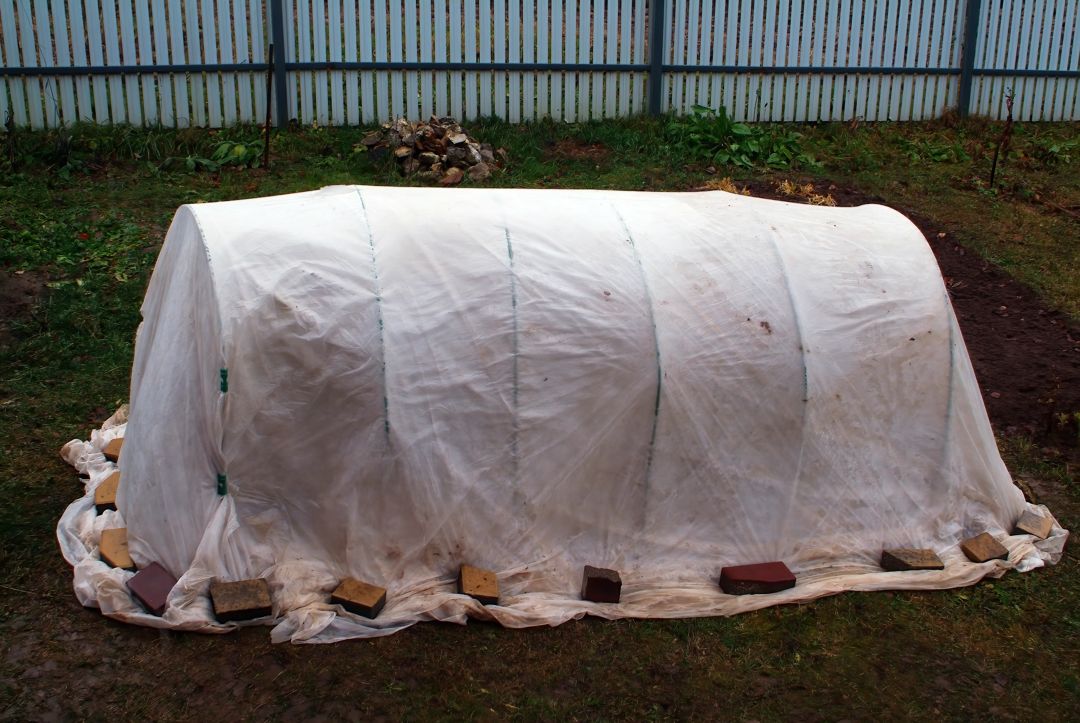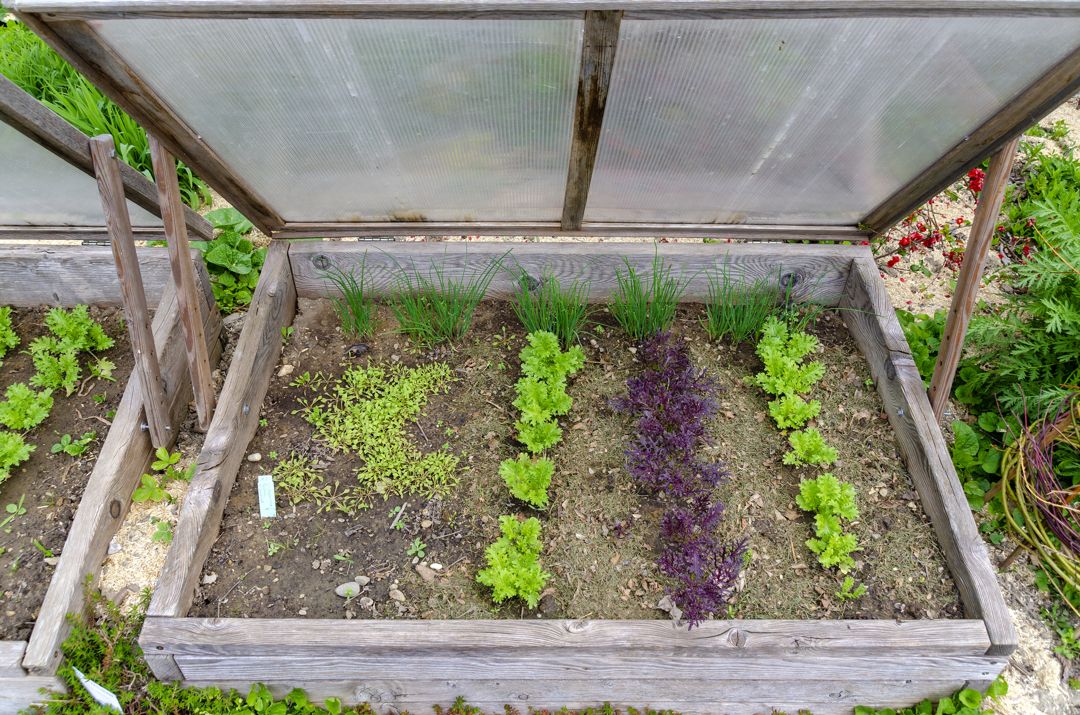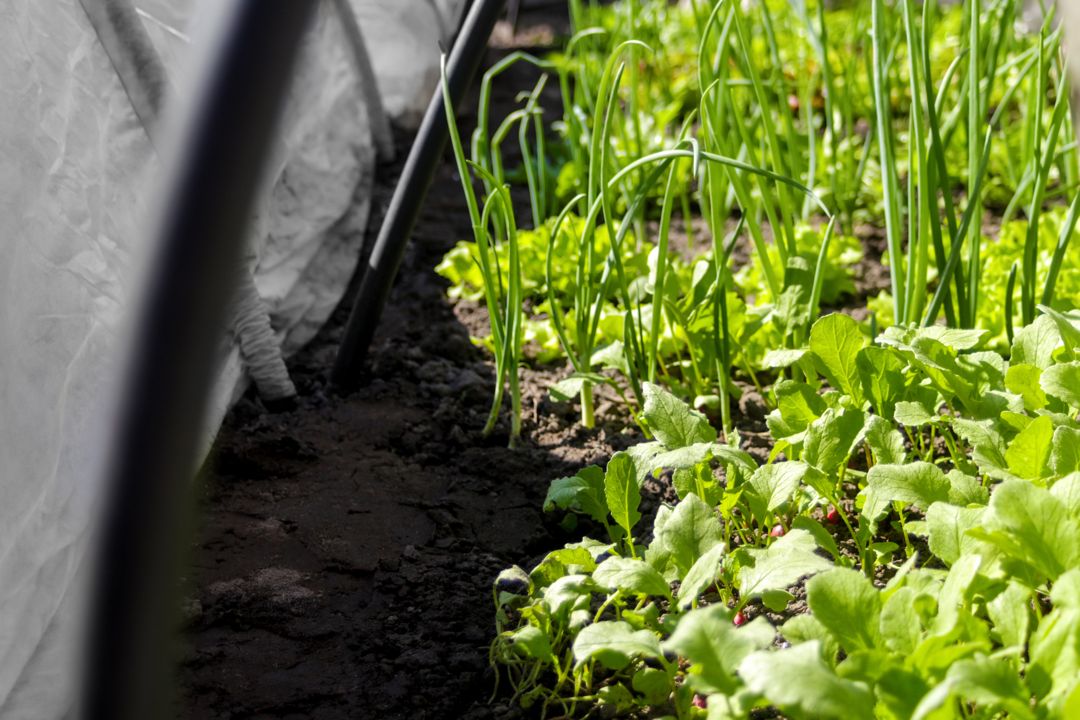It’s hard to believe that the hot summer weather is already starting to give way to cooler fall days! Fall can be a super-productive time in the garden, but even the most cold-hardy plants can use a bit of help to survive once the temperatures really start to drop. Don’t just give up on your plants as soon as the cold weather hits; use season extension techniques to keep on growing!
What is season extension?
Gardeners use season extension techniques to help plants grow outside of their optimal growing season. In the home garden, it’s common to use season extension techniques to help cool-season crops get going earlier in the spring and grow later into fall than they would otherwise be able to.
You might wonder whether it’s worth the time and expense to extend the growing season. While you could simply let nature take its course, you don’t need a fancy heated greenhouse to fend off the cold. You can extend the growing season with nothing more than some found materials and a few minutes each day!
Garden cloches

A garden cloche is typically a container that fits over top of a plant to protect it. Plastic or glass cloches can help trap heat and protect plants from cold, drying winds. Cloches can be purchased in a range of styles and sizes - just be sure to choose one that is designed to protect plants from the cold. Due to their smaller size cloches do not protect well in extremely cold weather but they will help guard against milder frosts.
To DIY your own cloche, find the right sized plastic or glass containers to cover your plants- recycled containers or old Tupperware are great options.
Regardless of whether you are buying or DIYing your cloches, be sure the cloche sits snugly on the soil surface so as not to let cold air seep in. Cloches will need to be vented or removed if the sun comes out during the day- just don’t forget to close them before the temperatures drop at night or on cloudy days!
Row cover

Row cover is a woven fabric (or sometimes plastic) that goes over rows of plants to help protect them from chilly temperatures. Like cloches, row cover does not protect well against deep cold but it does offer a few degrees of frost protection. Row cover is often sold in large sizes, so you may need to cut it down to the size you need for your garden. Row cover can be suspended above your plants with garden hoops, or lightweight floating row cover can be draped directly on top of your plants without the need for a support structure. Fabric garden row cover doesn’t need to be removed during the day as it is designed to let sunlight and water through. Some gardeners leave row cover on all season long to protect crops from insects and extreme weather.
If you don’t want to purchase row cover, you can use fabric and plastic from around the house to help protect your plants. Old sheets can be used so long as they are not too heavy. For an extra layer of protection, you can also use cut-up plastic garbage bags on top of the sheets. You will need to take off the plastic and sheets during the day so the plants can get sunlight, and replace them again at night to protect from frost. Also, proceed with caution if rain is in the forecast as these materials will not let water through and the added weight could crush the plants underneath.
To secure row cover to the ground, use stones, bricks, soil, or other heavy objects. Be sure to secure the cover as tightly as possible as open gaps will let the cold air in.
Cold frames

While cold frames require a bit of engineering, they will protect your plants in very cold temperatures. In some climates it’s even possible to keep growing through winter with a cold frame! To build a cold frame you can buy a cold frame kit, or, if you are handy, use recycled materials such as plastic sheeting, old windows, and doors to make your own. A quick search will turn up plenty of results for DIY cold frame projects.
Set up your cold frame so it faces south to get the most possible sun (and warmth). Open your cold frame a crack on sunny days to avoid cooking the plants inside - and don’t forget to seal it at night and on colder, cloudy days.
Season extension doesn’t need to be complicated or expensive. With a bit of time and some creative upcycling, you can keep on enjoying harvests even once the cold weather rolls in!
